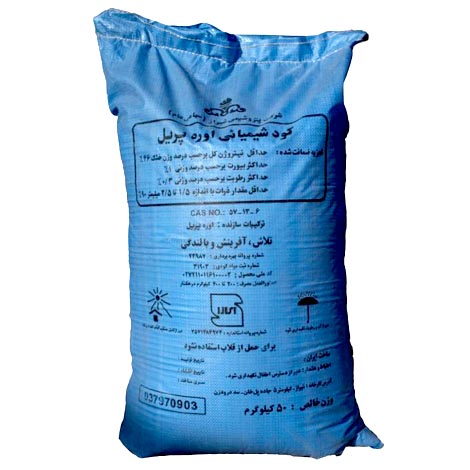Diammonium phosphate
Diammonium phosphate (DAP) (chemical formula (NH4)2HPO4, IUPAC name diammonium hydrogen phosphate) is one of a series of water-soluble ammonium phosphate salts that can be produced when ammonia reacts with phosphoric acid. Solid diammonium phosphate shows a dissociation pressure of ammonia as given by the following expression and equation:
{\displaystyle {\ce {(NH4)2HPO4(s) <=> NH3(g) + NH4H2PO4(s)}}}
At 100 °C, the dissociation pressure of diammonium phosphate is approximately 5 mmHg.
According to the diammonium phosphate MSDS from CF Industries, Inc., decomposition starts as low as 70°C.
"Hazardous Decomposition Products: Gradually loses ammonia when exposed to air at room temperature. Decomposes to ammonia and monoammonium phosphate at around 70°C (158°F). At 155°C (311°F), DAP emits phosphorus oxides, nitrogen oxides and ammonia."
Urea
Urea, also known as carbamide, is an organic compound with chemical formula CO(NH2)2. This amide has two –NH2 groups joined by a carbonyl (C=O) functional group.
Urea serves an important role in the metabolism of nitrogen-containing compounds by animals and is the main nitrogen-containing substance in the urine of mammals. It is a colorless, odorless solid, highly soluble in water, and practically non-toxic (LD50 is 15 g/kg for rats). Dissolved in water, it is neither acidic nor alkaline. The body uses it in many processes, most notably nitrogen excretion. The liver forms it by combining two ammonia molecules (NH3) with a carbon dioxide (CO2) molecule in the urea cycle. Urea is widely used in fertilizers as a source of nitrogen (N) and is an important raw material for the chemical industry.
Friedrich Wöhler's discovery, in 1828, that urea can be produced from inorganic starting materials, was an important conceptual milestone in chemistry. It showed, for the first time, that a substance, previously known only as a byproduct of life, could be synthesized in the laboratory, without biological starting materials, thereby contradicting the widely held doctrine vitalism, which stated that only living things could produce the chemicals of life.







